This pasta with saffron is a very traditional and flavorful Italian recipe that only uses a handful of ingredients. Ready in just 40 minutes, it's a perfect blend of simplicity and sophistication for any day of the week.
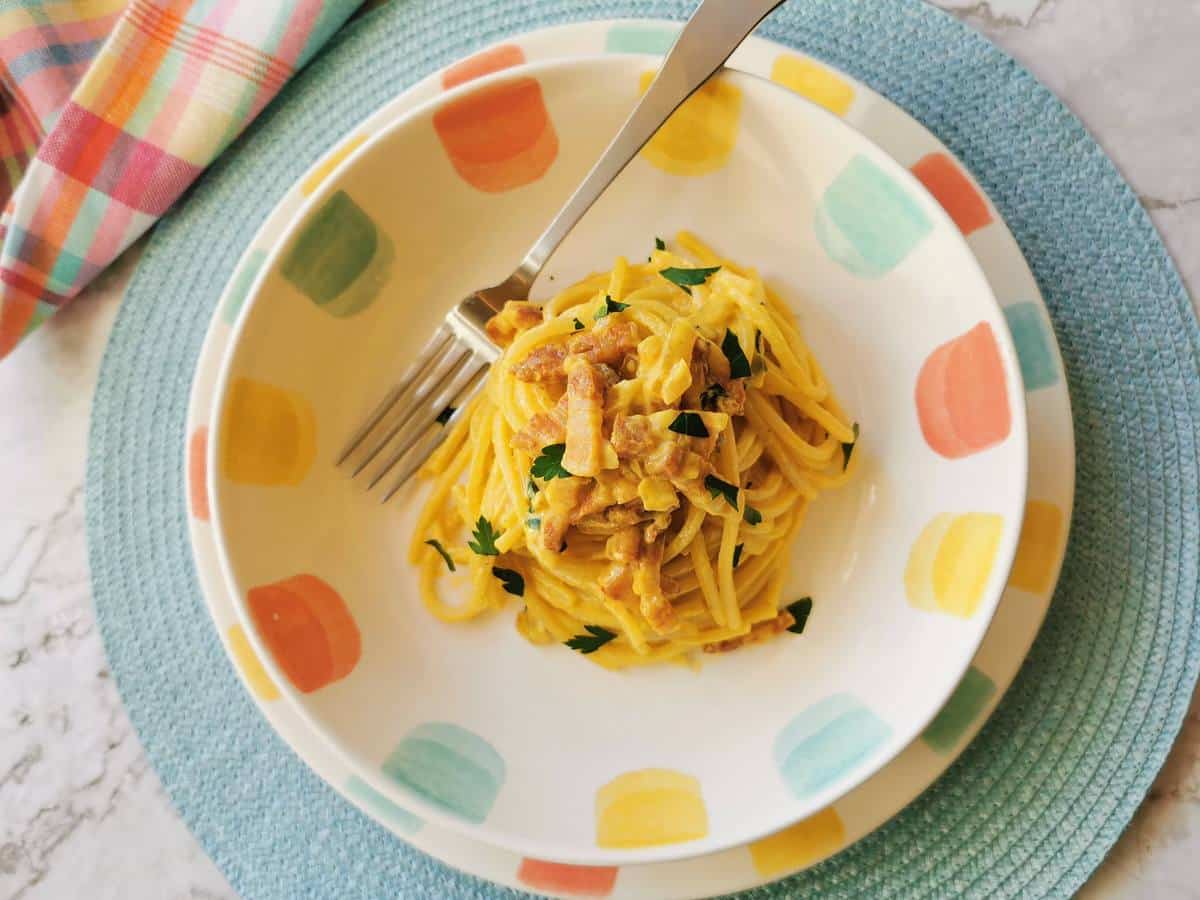
Saffron's history in Italy.
Saffron is grown in a few Italian regions but was first cultivated in Abruzzo and then became a popular crop in other regions because of its high value. Today, saffron is mostly grown in Abruzzo, Sardinia, Marche, Tuscany, Lombardy and Emilia-Romagna. However, the popularity of this crop appears to be spreading even though production is very labor intensive.
According to local legend, the history of saffron in Abruzzo began in the 14th century with a Dominican monk named Santucci. Father Santucci was a native of Navelli, the old saffron capital of the region and one of a handful of towns in Abruzzo where saffron is grown today, and the town I bought my saffron in!
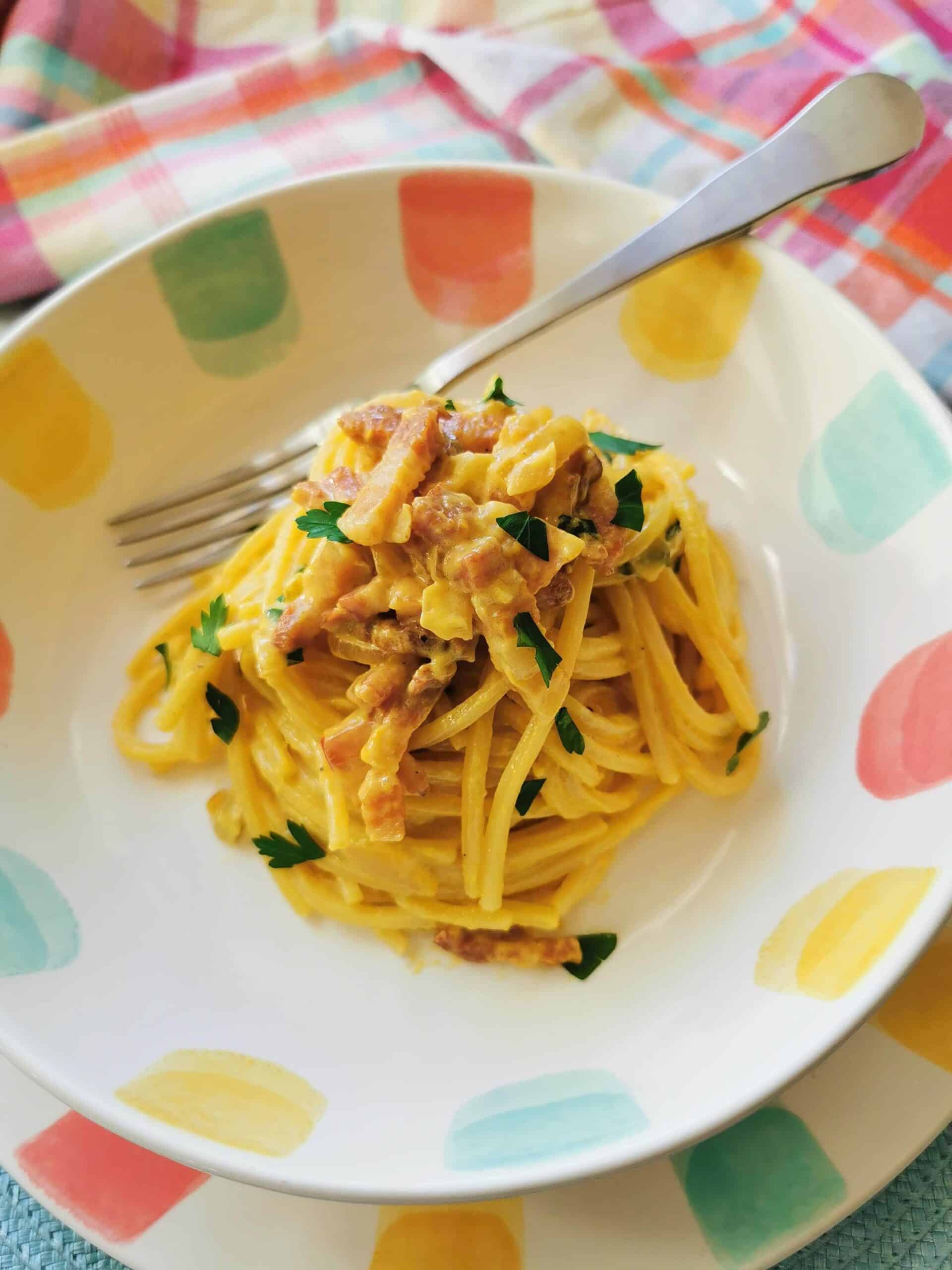
Santucci apparently moved to Spain to serve at the court of the Spanish Inquisition. While there, he learned to appreciate and savour many typical Iberian dishes made with saffron (think of Paella!). He liked the spice's strong aroma, as well as its supposed healing qualities.
Santucci decided to try cultivating the spice when he returned to his hometown, bringing with him a number of Crocus Sativus bulbs. He eventually created an enterprise that produced a high-quality saffron which became well-known throughout Europe.
Saffron, the most expensive spice in the world!
Known as Navelli saffron or L'Aquila saffron, this saffron is, today, generally agreed to be one of the very best in the world. Its stigmas are longer, its aroma stronger and its color deeper than most others. It is also known as the red gold of Abruzzo and at the time of writing this sells for about 25 euros a gram.
I paid 18 euros, so I guess it was a good price! However, it's not surprising that saffron is the most expensive spice in the world. About 200,000 crocus sativus flowers are needed to produce 1 kilogram of saffron, which is made by drying the flower's stigmas, after harvesting them by hand.
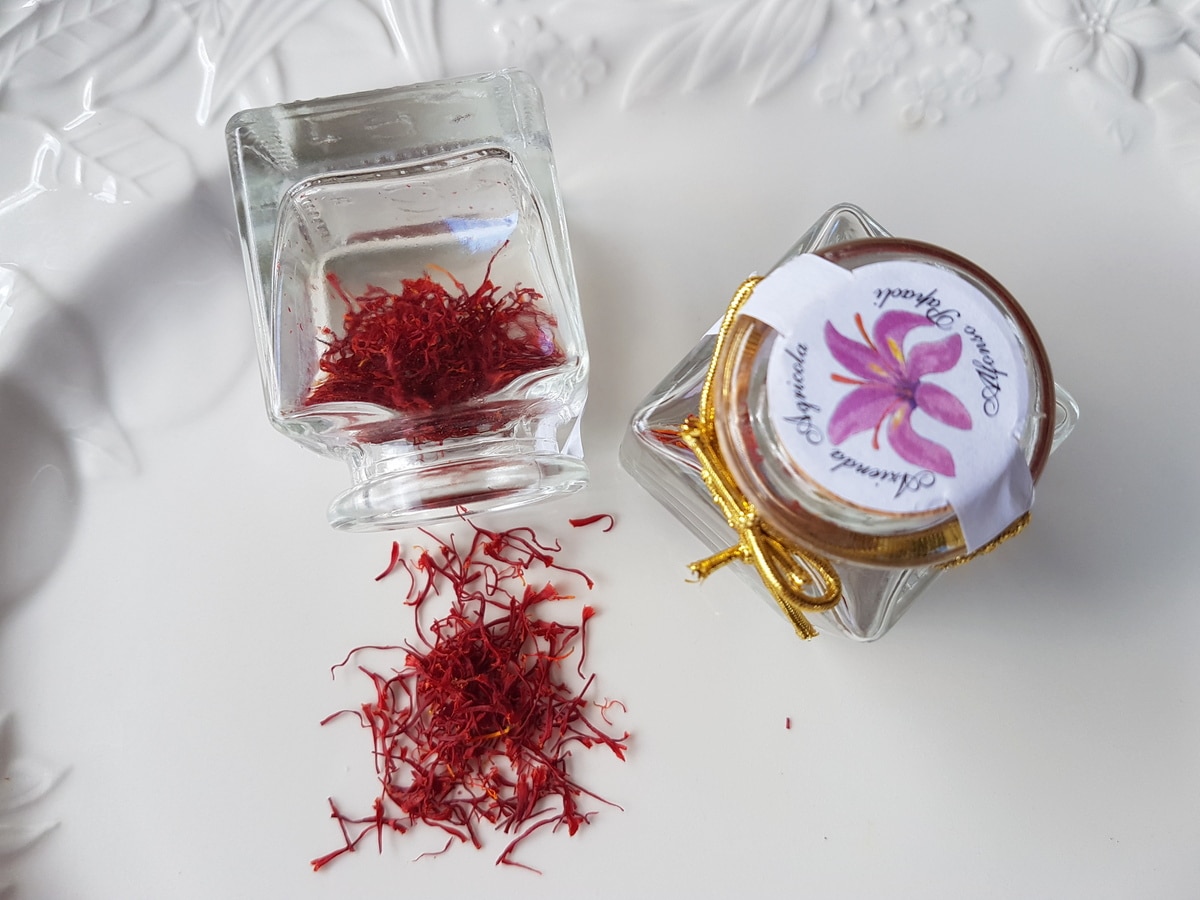
Although saffron is expensive, a little goes a long way. A gram of Italian saffron contains around 300 threads, and most recipes only call for a pinch of saffron threads (4-6 threads) for 4 servings. In fact, if you add too much saffron to a dish it will taste bitter. So, a gram of saffron won’t lead to bankruptcy!
Ingredients
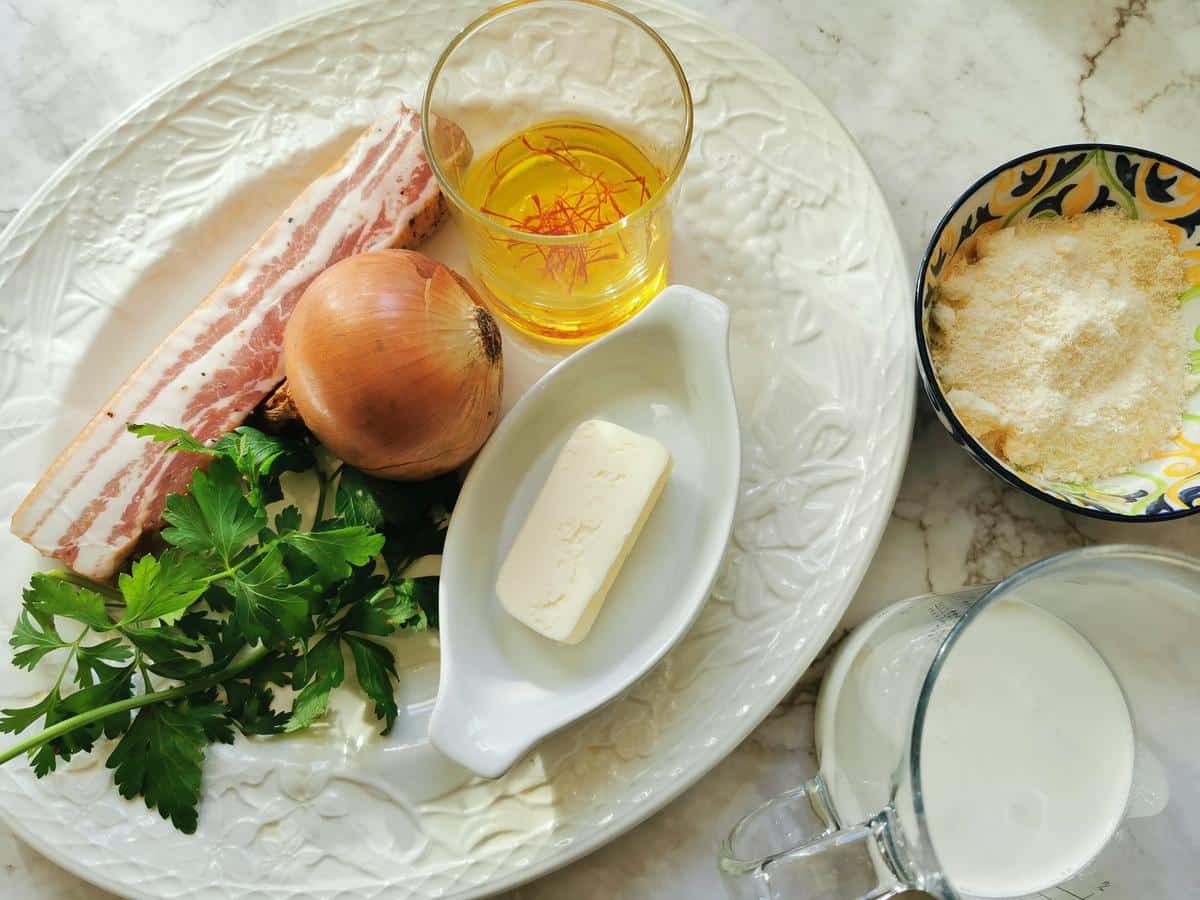
- Pasta: For this recipe, I used Spaghetti alla Chitarra due to its unique square edges, which superbly capture the creamy sauce. If Spaghetti alla Chitarra isn't available, feel free to use spaghetti, linguine, or fettuccine, as they all work well with the rich saffron sauce.
- Saffron Threads: To ensure the highest quality, look for saffron labeled as ‘superior’, ‘sargol’, or ‘coupé’. A small amount of this potent spice goes a long way in infusing the dish with its distinctive aroma and color.
- Fresh Cream: It forms the creamy foundation of the sauce, perfectly melding with the unique flavor of the saffron to create a luxuriously smooth texture.
- Onion: Adds a layer of subtle sweetness, enhancing the sauce's depth. Select firm onions with a shiny exterior for the best flavor contribution.
- Pancetta: Fresh pancetta with a good balance of meat and fat is ideal for this recipe. In its absence, diced bacon can be used as a suitable replacement, offering a similar savory depth.
- Parmigiano Reggiano: This sharply flavored cheese brings a savory edge to the creamy sauce. If Parmigiano Reggiano is not available, Grana Padano serves as a fine substitute, offering a slightly milder but equally enjoyable flavor.
- Parsley: The use of fresh parsley is recommended for its vibrant color and freshness, which adds a burst of herbal brightness to the final dish.
- Olive Oil: A small amount is used to sauté the onions and pancetta. An alternative is another neutral oil like canola or vegetable oil.
- Salt and Ground Black Pepper: Essential seasonings that elevate the natural flavors of the dish. Use freshly ground pepper for a more pronounced flavor.
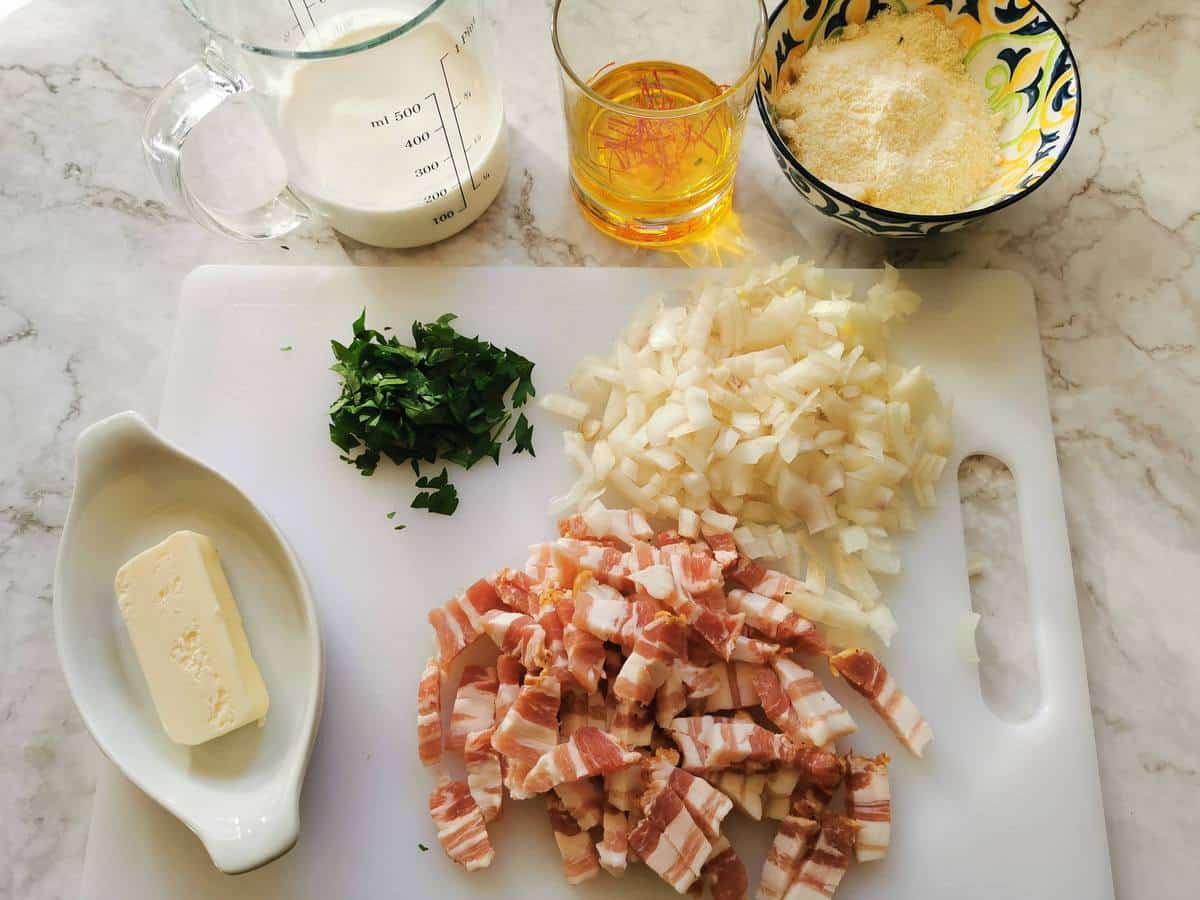
Expert Tips
Infusing the saffron: It may be tempting to skip this step but allow the saffron threads to infuse in water for 2 hours to create a saffron concentrate. This will better incorporate the saffron flavor into the pasta sauce.
Balanced Seasoning: Be mindful when adding salt, as pancetta is naturally salty. Taste the sauce before adding any additional salt to avoid over seasoning the recipe.
Sauce Texture: To achieve a glossy and rich texture in your sauce, maintain a gentle simmer. Avoid boiling, as some types of cream can separate, reducing the smoothness of your sauce.
Adding Pasta Water: If you find the sauce too thick towards the end of cooking, use some of the reserved pasta water. This starchy water is perfect for adjusting the sauce's consistency, ensuring it coats the pasta evenly without being overly heavy. Just a splash can make all the difference!
Step by Step Instructions
1) Add the saffron into a bowl with 2-3 tablespoons of hot water approximately 2 hours before cooking. After 2 hours, mix in the cream and a pinch of salt.
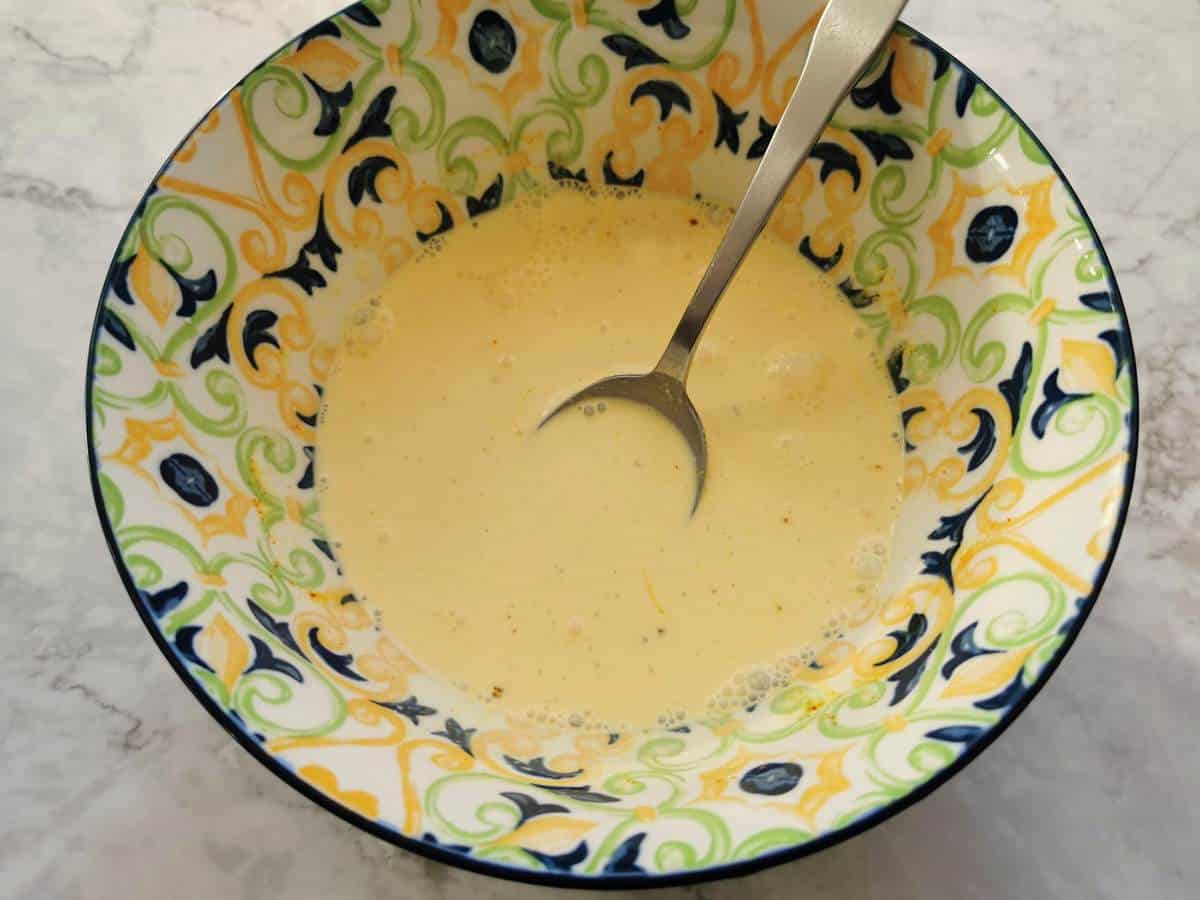
2) Bring a large pot of water to a boil for the pasta. Add salt to the boiling water.
3) In a large skillet, heat the butter with the olive oil over medium heat. Add the pancetta to the pan and cook until it starts to brown slightly.
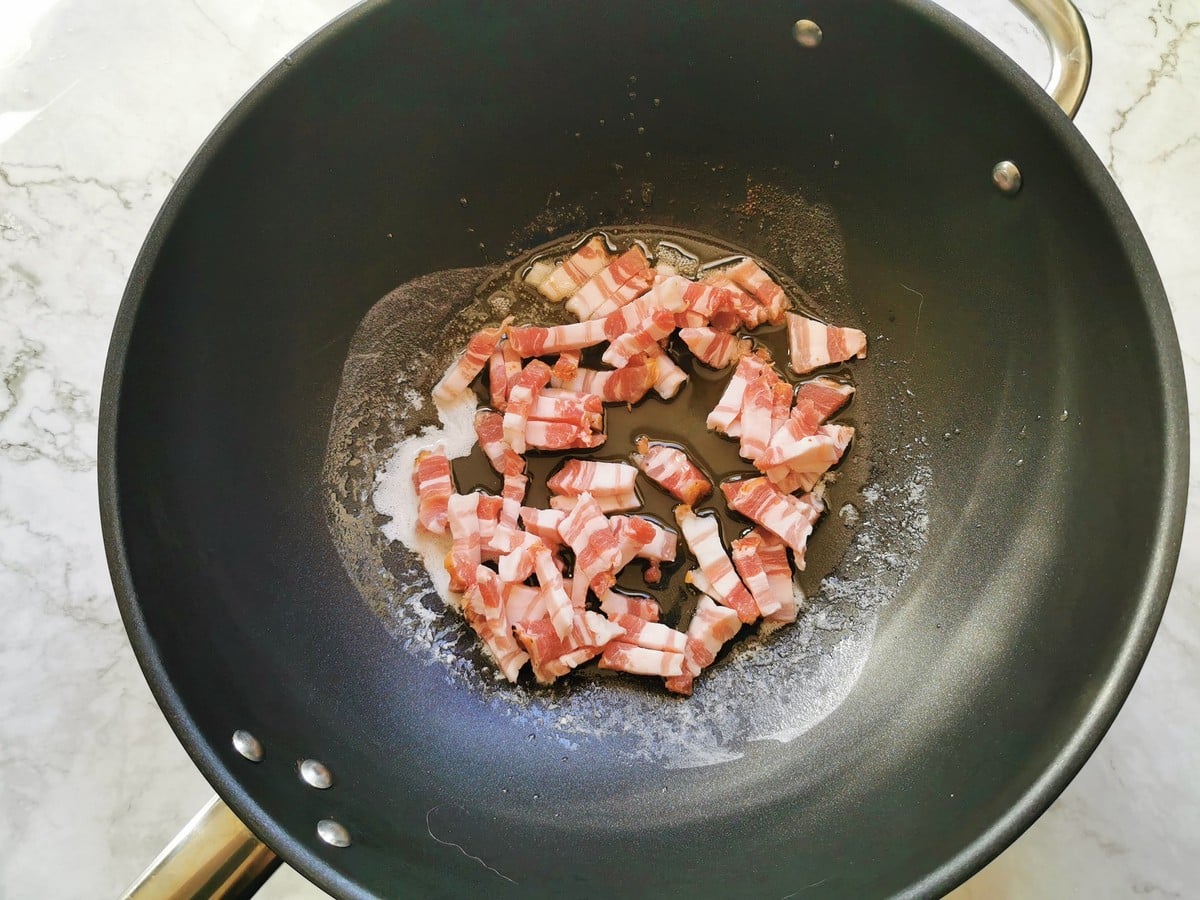
4) Add the finely chopped onion to the pan with the pancetta and let it cook until the onions are softened and the pancetta has browned.
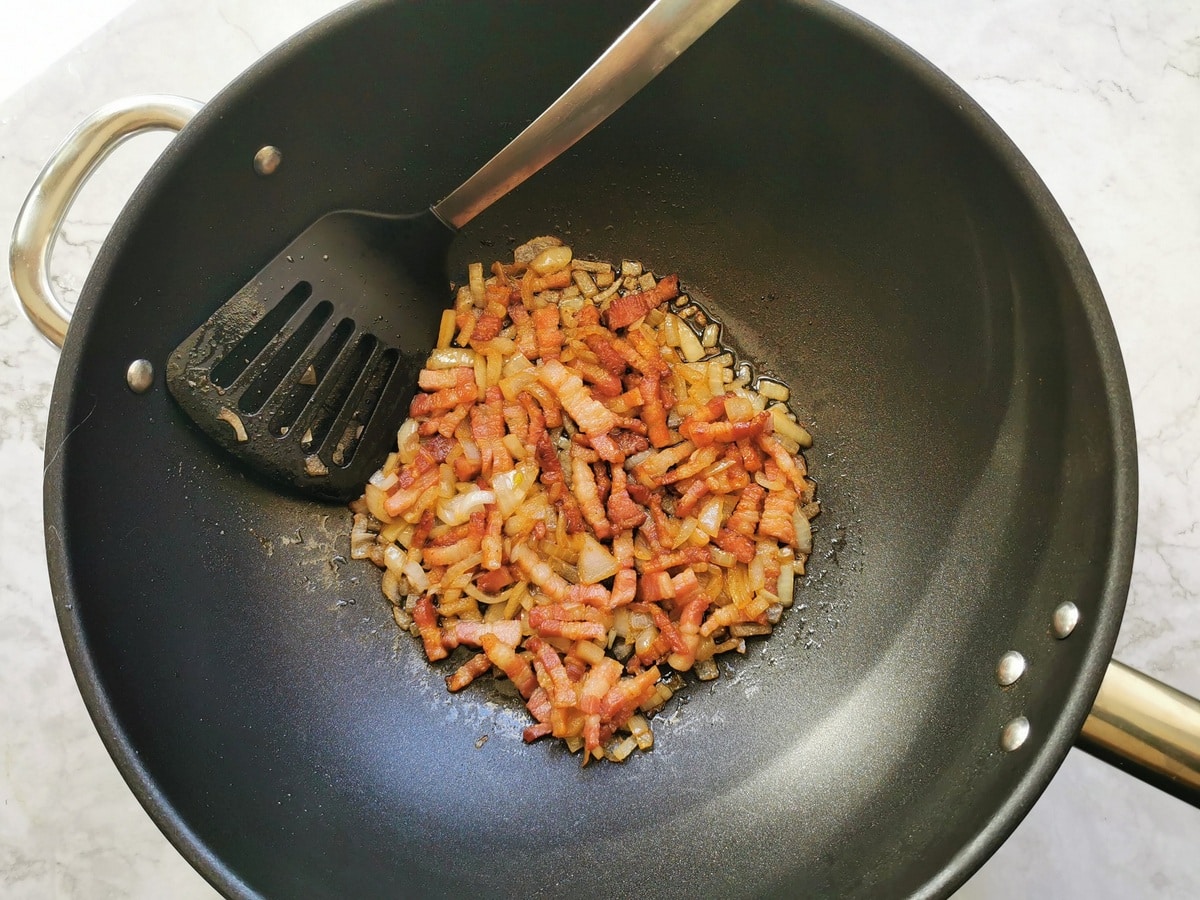
5) Pour the saffron-infused cream into the pan. Stir well and cook for a minute.
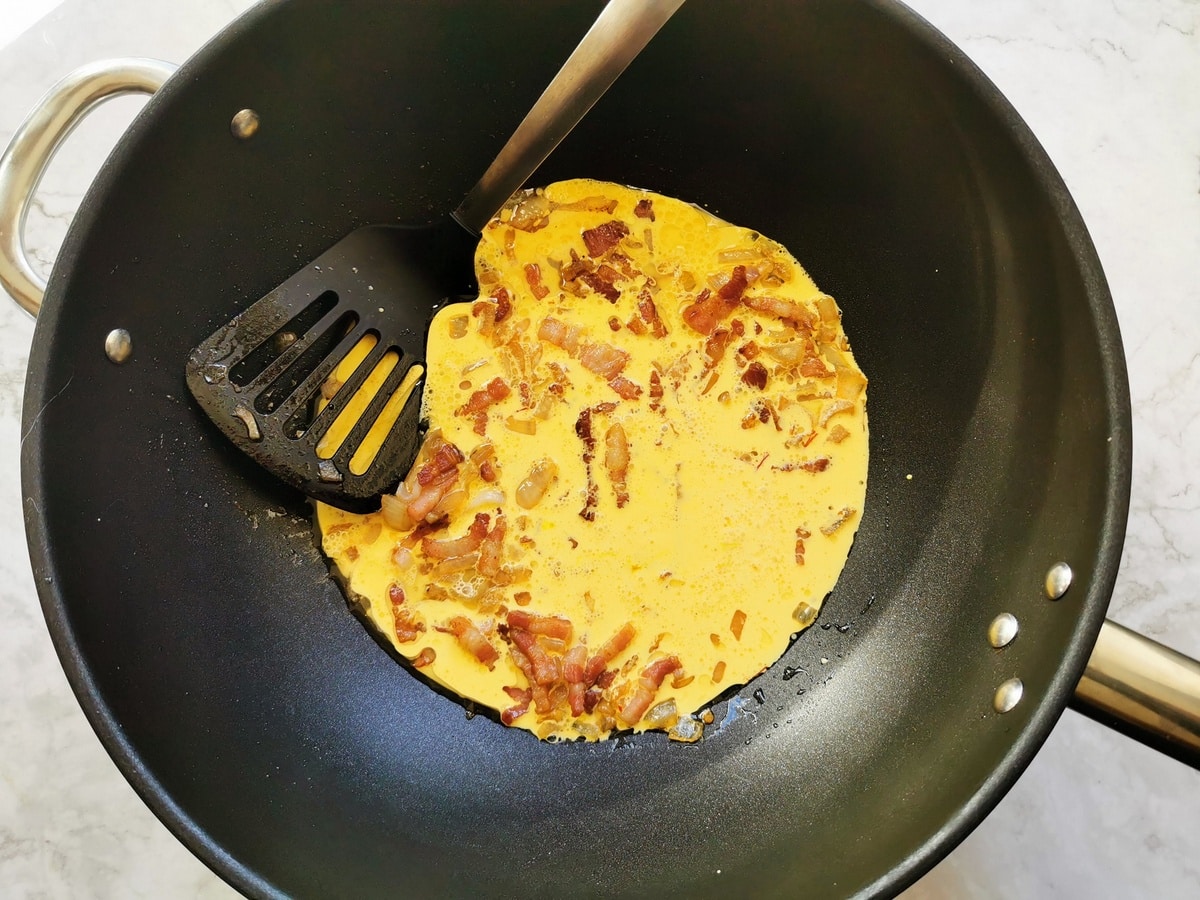
6) Add some of the parsley, ground pepper, and a portion of the grated Parmigiano Reggiano to the sauce. Continue cooking for a couple more minutes until the Parmigiano Reggiano has melted.
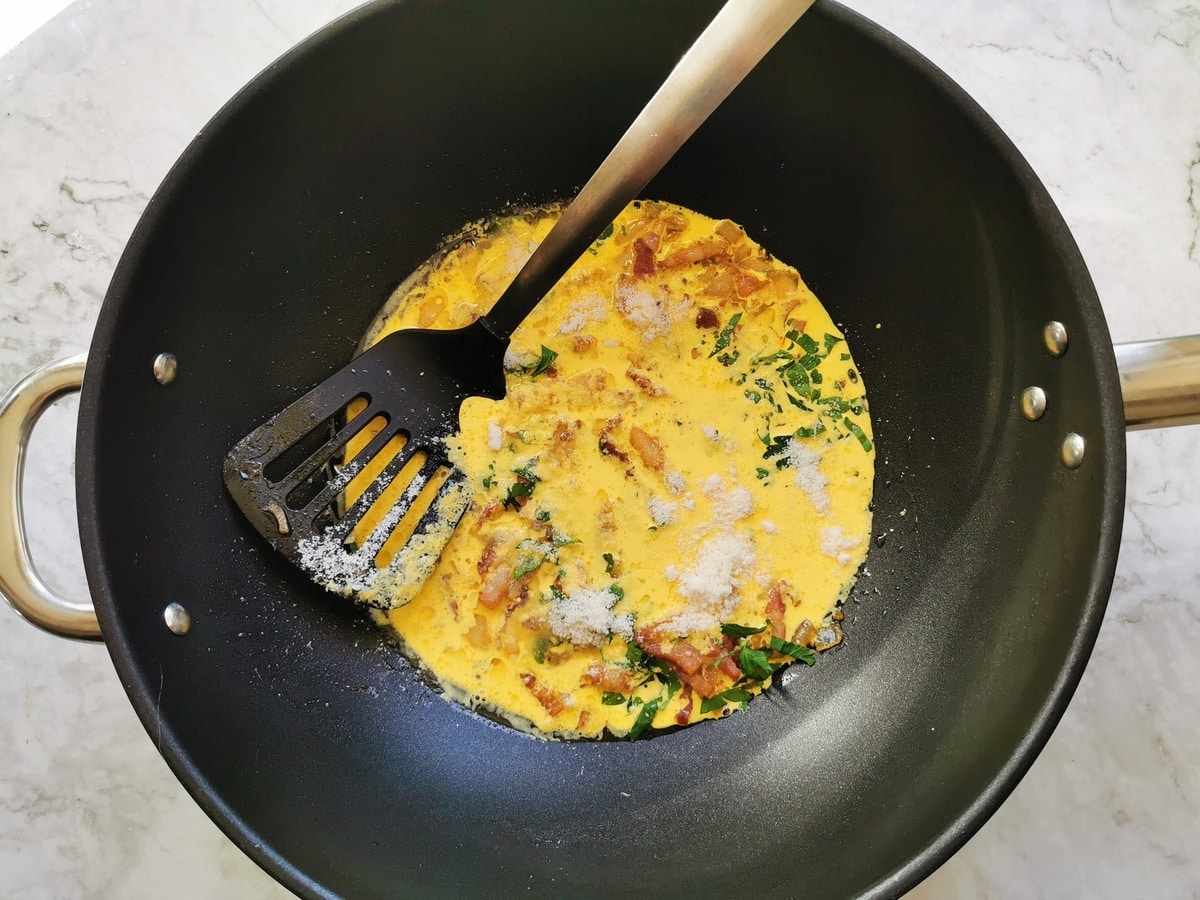
7) Meanwhile, cook the pasta al dente according to package instructions. Before draining, reserve a cup of the pasta cooking water. Add the pasta to the saffron sauce.
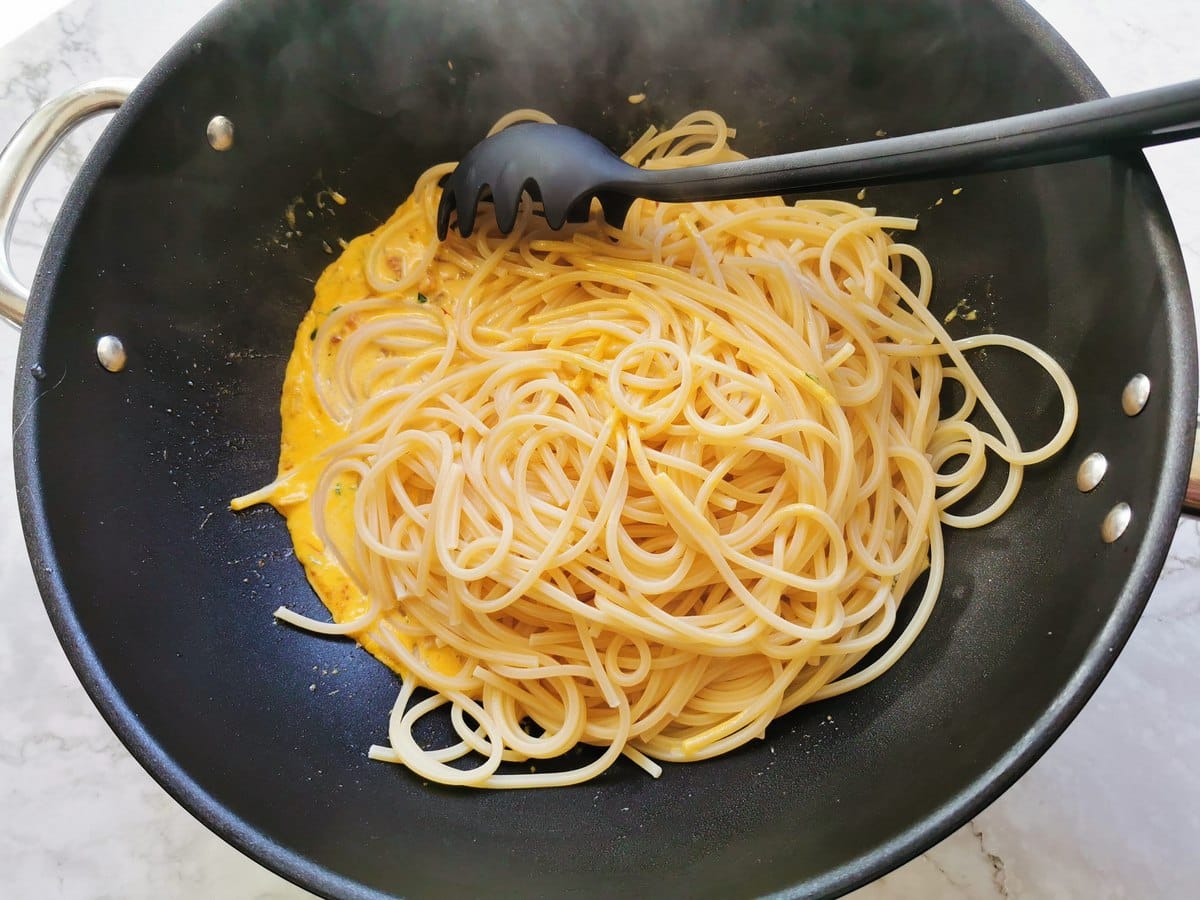
Tip: If the sauce seems too dry, mix in some of the reserved pasta water.
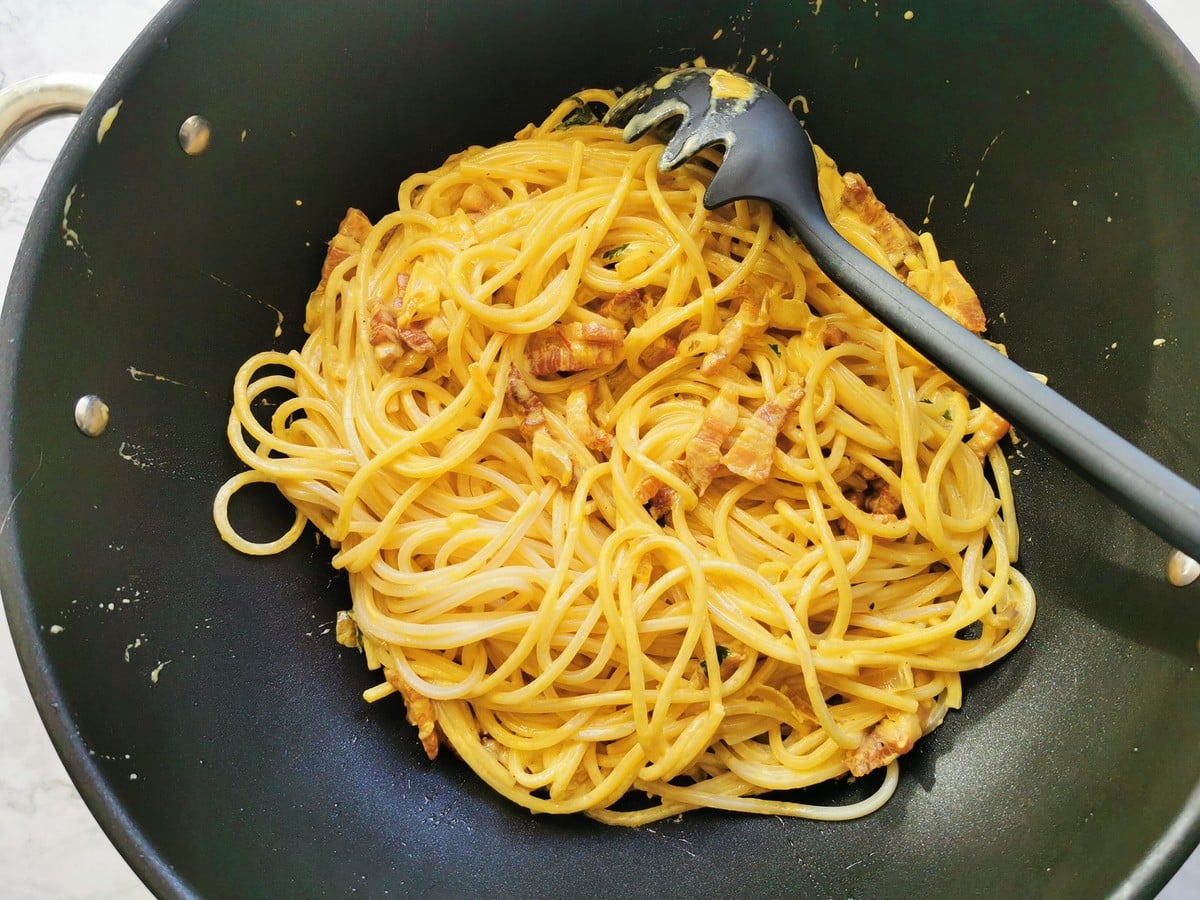
8) Serve the pasta with a sprinkle of the remaining parsley and additional Parmigiano Reggiano if desired.
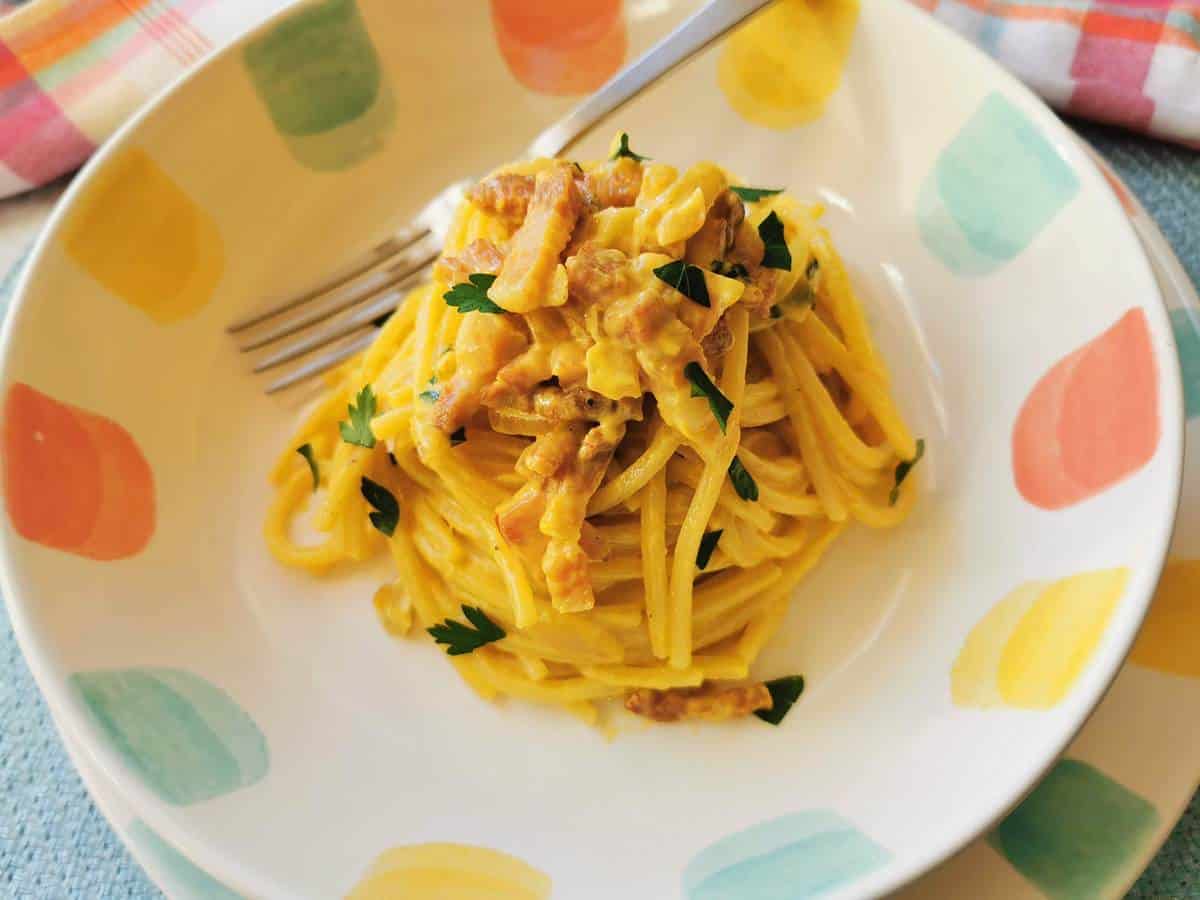
Storage and Leftovers
After cooking, allow the pasta with saffron to cool down to room temperature. Once cooled, transfer it to an airtight container, ensuring it's securely sealed. Store in the refrigerator, where it will remain good for up to two days.
To reheat, place the desired portion of pasta in a microwave-safe dish. Cover it with a microwave-safe lid or plastic wrap. Microwave for 2 minutes, then in 30-60 second intervals, stirring between intervals for even heating until hot throughout.
FAQs
Yes, you can use various types of long thin pasta, such as linguine, spaghetti, or fettuccine. Each type will offer a slightly different texture but will work well with the flavors of the sauce.
Yes, you can use saffron powder in this recipe. Instead of infusing it in water, mix the saffron powder directly with the cream in a bowl. This will allow the saffron to blend evenly with the cream and ensure it distributes throughout the sauce.
When buying saffron, look for labels that say ‘superior’, ‘sargol’, or ‘coupé’. These terms indicate the highest quality saffron, ensuring you get the most aroma and flavor. High-quality saffron is typically sold in paper or glass containers at specialty food stores or online.
More recipes you may like:
- Italian Prawn Saffron Linguine Recipe
- Pasta with saffron and zucchini
- Sardinian Gnocchi-Malloreddus with sausage, tomatoes & saffron
- Sardinian Ricotta Ravioli with Saffron and Lemon
- Sausage and Saffron Pasta alla Monzese
If you make this saffron pasta recipe I’d love to hear how it turns out and if you liked it. Please leave a comment here on the blog or on The Pasta Project Facebook page. Looking forward to hearing from you.
Buon appetito!
Pin for Later:
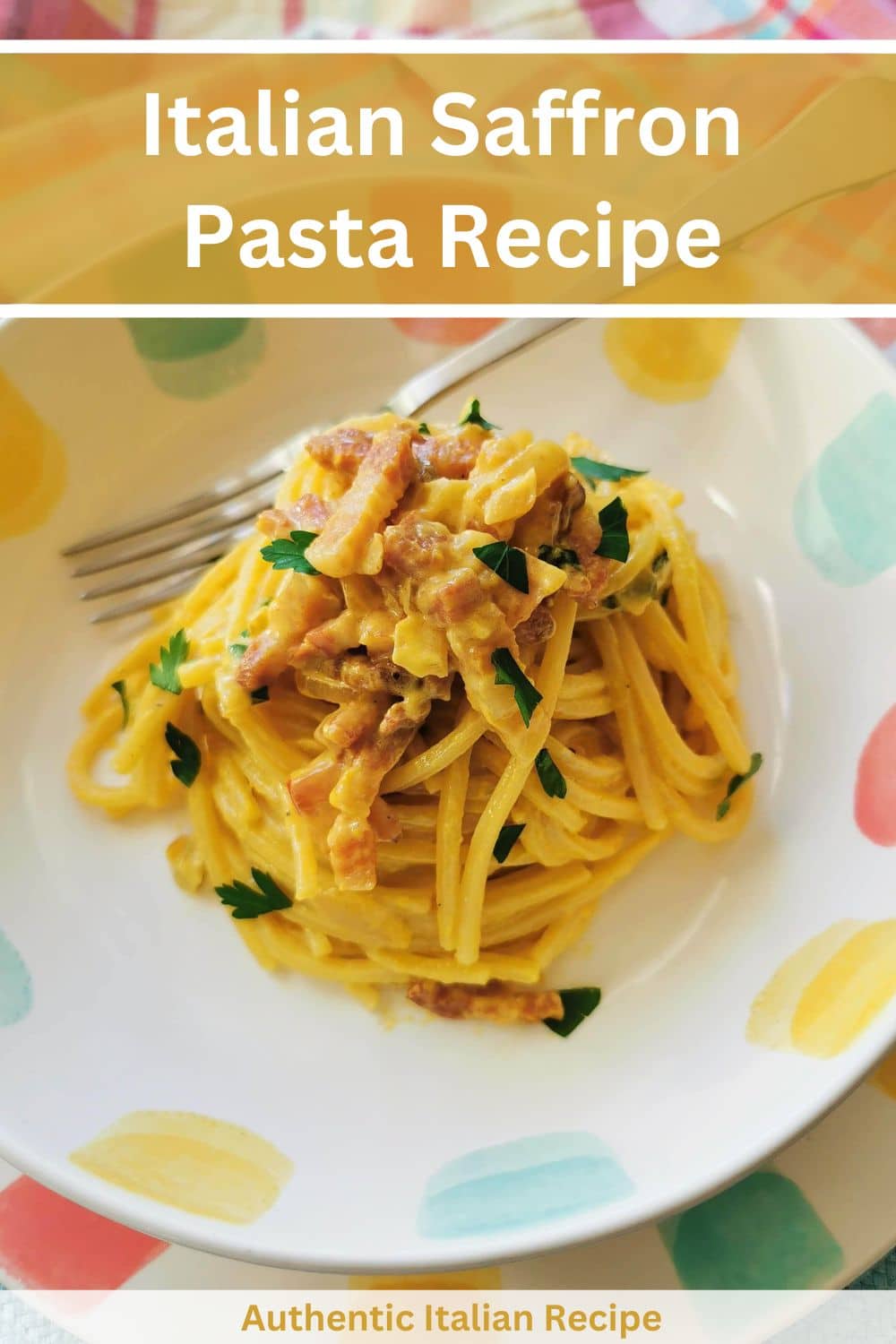
If you are interested in learning how to make homemade pasta and different types of gnocchi, check out my shop page for some great video online courses from my friends in Rome! Nothing beats learning to make pasta from Italians! Plus while you’re there why not order a copy of one of my pasta recipe cookbooks?


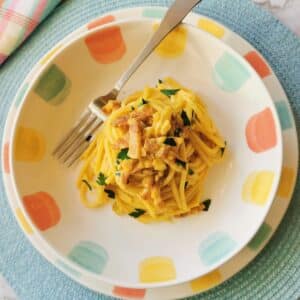
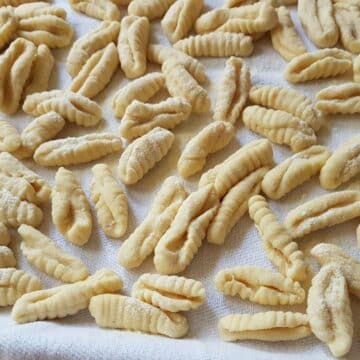
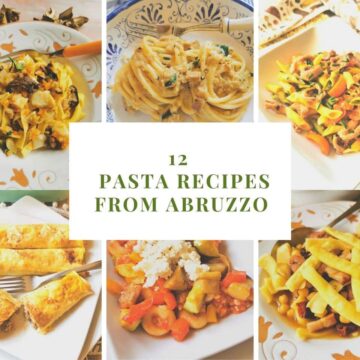
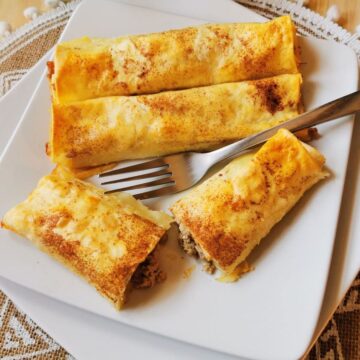
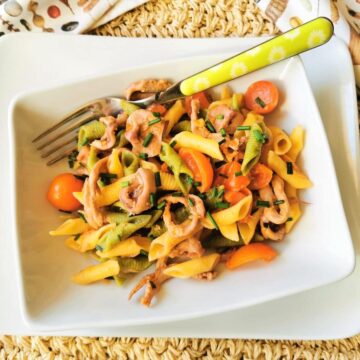
michele says
This has wonderful depth of flavour, and is so easy to prepare. Best quality saffron is definitely called for here, ditto pancetta.
Big thanks to you Jacqui, as I even had spaghetti alla chitarra available because of one of your other recipes. I have learned so much about pasta from you, all kinds of pastas I had never heard of before despite having been an avid cook for many years.
Jacqui says
Hi Michele, I agree he flavour of this saffron pasta recipe is wonderful. But, yes good quality saffron is important! It make me happy that you enjoy trying new pasta recipes using my site! Always more to come!
Jenny says
I love cooking with saffron and it works so well with pasta and pancetta. Our spaghetti dinner was perfect last night. Thank you.
Sandhya Ramakrishnan says
We use a lot of saffron in Indian cuisine for desserts. I have never thought of using saffron in a pasta recipe. I found the best saffron for the best value in Dubai. I was fortunate to go into the city to visit the local markets and they had the best saffron that I have ever used.
Sean says
I love pancetta and this was such a wonderful recipe to use it all up.
Lori | The Kitchen Whisperer says
Truly outstanding! The pancetta with the cream is amazing but the addition of saffron is what takes this to the next level! You truly outdid yourself!
Loreto and Nicoletta says
we are loving everything about this pasta. Great combination of flavors and that color from the safron just gorgeous. Really enjoyed reading the history of saffron! We are so craving a plate of this delicious pasta!
Great job!
❤️